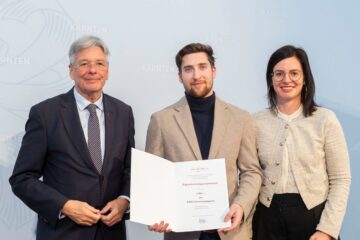Aerial drones connected to cellular networks can affect the throughput of common cell phone users. System-level simulation results were presented at an ACM MobiSys workshop earlier this week.
Today’s commercial drones rely on Wi-Fi and proprietary technologies for wireless connectivity. Alternatively, drones could connect to cellular networks, like 5G, which have clear benefits regarding wide-area coverage and efficient resource management facilitated by the operator. However, the use of cellular technology by drones is not widespread, partly because incorporating drones as aerial users entails significant modifications to the network infrastructure, not least to avoid adverse effects on common users on the ground.
A vital aspect in this context is the inter-cell interference caused by drones. It arises when drones fly at altitudes that enable them to establish line-of-sight links with several base stations. When an aerial drone transmits an uplink signal intended for a specific base station, this signal is also received with considerable power in multiple neighboring base stations. As a result, the uplink transmissions of ground users in those cells experience interference.
The research project “Drones in cellular networks,” led by Aymen Fakhreddine (PI) and Christian Bettstetter (mentor and doctoral advisor) at the University of Klagenfurt, investigates these issues. Enrique Caballero, the doctoral student working on this project, explains their approach: “We augmented the Vienna 5G System Level Simulator with a radio link model that has been suggested by standardization bodies specifically for wireless communications of drones. Using simulations in various scenarios, we demonstrated that transmissions from ground users may indeed suffer from significantly lower signal-to-interference ratio and throughput if cellular-connected drones are in the air.” This week, the project’s findings were presented at the ACM Workshop on Micro Aerial Vehicle Networks, Systems, and Applications, which took place as part of ACM MobiSys in Helsinki, Finland. “Showing the potentially negative impact of drones was the first step in our project”, Aymen Fakhreddine states and argues that solutions will be developed to overcome these consequences. He concludes that “transmit power control in drones could alleviate this degradation while maintaining an acceptable link quality for the drones themselves.”
These activities on cellular-connected drones are part of a more extensive research focus of the University of Klagenfurt on Networked Autonomous Systems and the Dronehub K, where various aspects of drone systems are explored and tested. Areas of expertise include autonomous navigation, wireless networking, and coordination and path planning in drone swarms. Since 2019, the university has also been operating one of Europe’s largest and most modern drone flight halls.
Publication
Enrique Caballero, Aymen Fakhreddine, and Christian Bettstetter. Interference by Drones to 5G Ground Users: A Simulation Study. In Proc. ACM Workshop on Micro Aerial Vehicle Networks, Systems, and Applications (DroNet), Helsinki, Finland, June 18, 2023. Open access. Download ACM version.
. . .
The text of this blog entry is closely based on the above paper with contributions from all coauthors. The cover photo shows Enrique Caballero (left) and Aymen Fakhreddine (right). The “Easter egg” in this photo is that Aymen Fakhreddine is indeed the PI of the project. Funding has been received from the Austrian Science Fund (FWF) under grant ESPRIT-54 (Drones in cellular networks).




